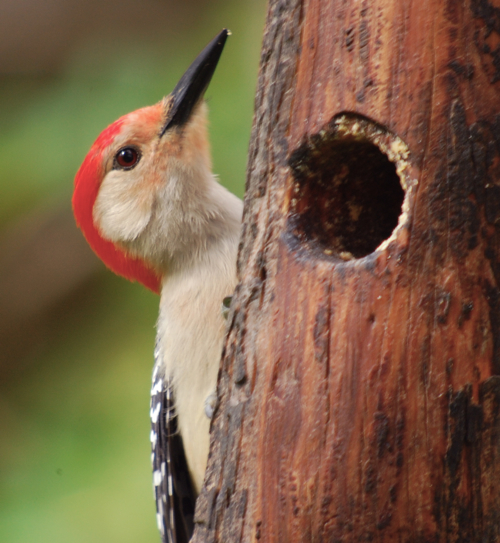 Twice a year I have some bird banding friends come out to Mr. Neil's place to band the birds around the yard--once in spring and once in fall. On Saturday my buddies Roger (aka MNBirdNerd) and Amber (aka AvianImages) set up mists nets to collect data and got a GREAT cross section of spring bird activity from migration to breeding. I hoped we would get a ton of cool information since I've noticed birds like the above red-bellied woodpecker coming and flying away with large beakfuls of suet--do they have young in the nest?
Twice a year I have some bird banding friends come out to Mr. Neil's place to band the birds around the yard--once in spring and once in fall. On Saturday my buddies Roger (aka MNBirdNerd) and Amber (aka AvianImages) set up mists nets to collect data and got a GREAT cross section of spring bird activity from migration to breeding. I hoped we would get a ton of cool information since I've noticed birds like the above red-bellied woodpecker coming and flying away with large beakfuls of suet--do they have young in the nest?
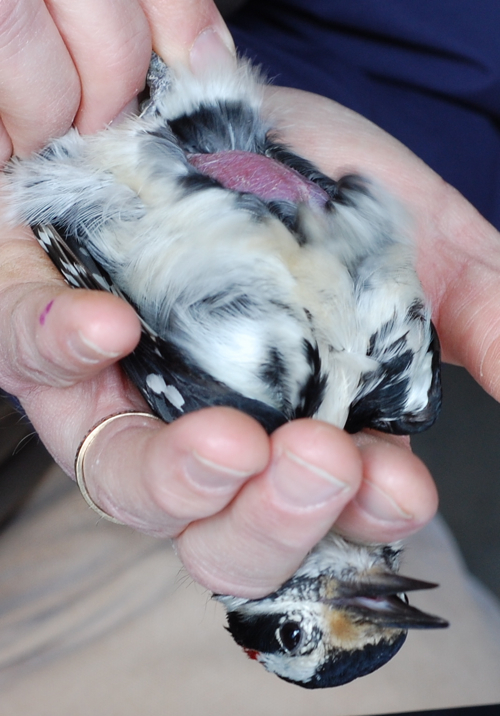
They did get in quite a few woodpeckers. Here's a hairy woodpecker male (note the little bit of red on the head). Roger gave him a blow and revealed a brood patch. Both males and females incubate so both would need a bare patch of skin swollen with blood vessels to keep the eggs nice and warm during incubation. I went to see what Cornell Lab of Ornithology had to say specifically about hairy woodpecker and in the breeding section that mentions, "onset of broodiness" and that "incubation begins in earnest with laying of last egg, but male roosts in nest cavity and de facto incubation may begin with pen-ultimate egg, thus accounting for hatching often occurring over a 2 day period and for some of the size differences noted in nestlings."
I love that someone other than my husband uses the word "pen-ultimate"to say that because the male sleeps in the nest cavity at night, incubation could start when the second to last egg is laid by the female.
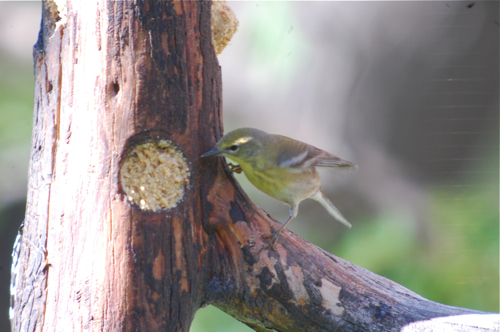
For the past few springs we've had a couple of pine warblers come in to the feeders when the weather is cold and insects are not out in full force. Warblers generally are not feeder birds, this brightly colored group of birds primarily eats insects--except for the pine warbler. During a cold, wet spell like we are having right now in the Twin Cities you can find orioles, catbirds, yellow-rumped warblers, scarlet tanagers coming to suet feeders as an alternate source of protein. Above is a pine warbler eating some no-melt peanut suet. What makes the pine warbler a little different from other warblers is that they are known to eat seeds and sometimes, I see pine warblers eating sunflower seeds out of the shell as well as suet.
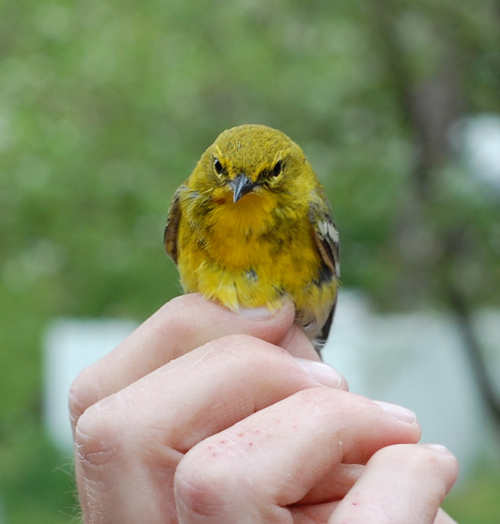
I think the rather disgruntled look on the face of this male pine warbler about says it all. While we banded this bird, a second pine warbler came to the feeder. It looked more like the bird in the photo above this--either a female or second year male. I suspect that pine warblers are nesting nearby since they sing well into June but it's hard to say since they quit coming to feeders so I don't see them feeding young (and I've yet to find the nest).
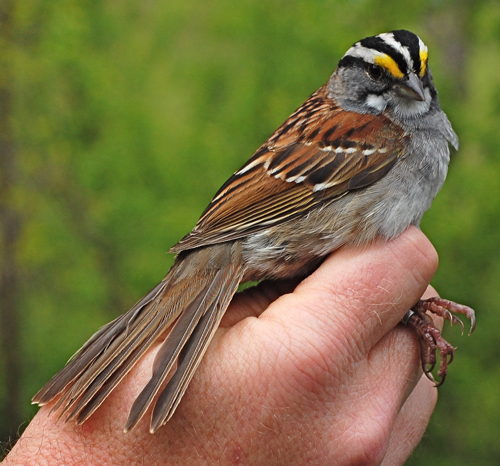
There was a huge brush pile that was chock full of sparrows and they set the nets near that and got a few white-throated sparrows. When Roger blew on their breasts, he was watching for fat rather than brood patches. These sparrows are still heading north and birds that showed yellow globs of fat just under their skin were loading up to travel further north.
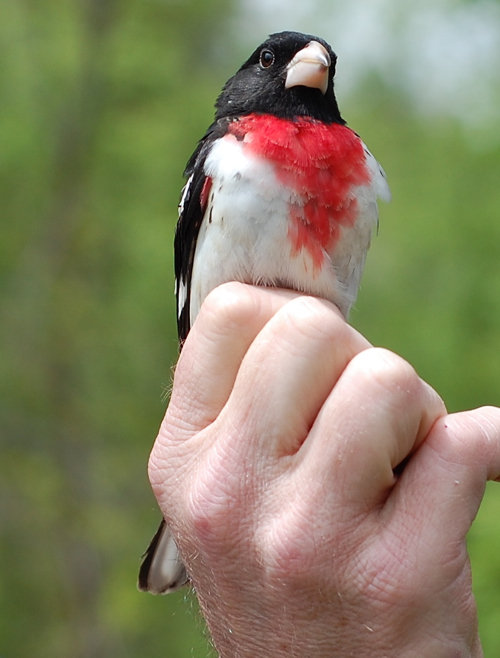
The number of rose-breasted grosbeaks at the feeders have been increasing exponentially this week. About seven days earlier, I heard one, then three days later, three males were at the feeder and by our banding day, I would say that we had five males jockeying for position on the feeder--and then one lone female. Males typically arrive first to set up territory, so it was fun to see that in action. We determined this bird was hatched last year, he had a few brown patches of juvenile plumage that had not molted out yet--not unlike some of the young males I saw in Panama this past February. I wondered if the grosbeaks who arrived early on territory in sleet and cold temps and think, "I left Central America for this?"
Keep your eyes open at the feeders and in the woods. Migration is in full swing, we have quite a few birds just flying and a few more who have yet to arrive. With this wet weather, some birds will look for fast food like bird feeders and you might be surprised by what you find.




